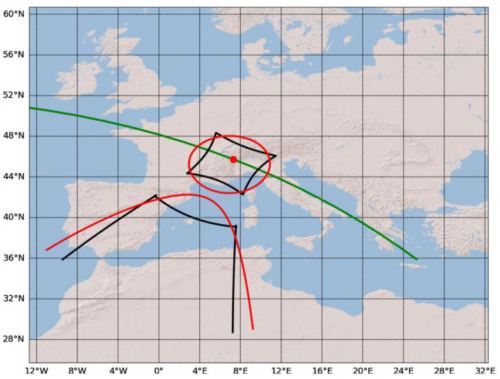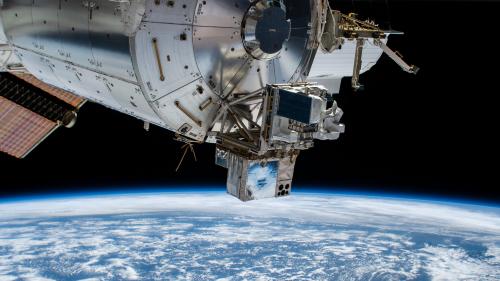The Atmosphere-Space Interactions Monitor (ASIM) is a 314kg external payload outside the ISS developed by the European Space Agency (ESA) to study the Transient Luminous Events and Terrestrial Gamma-ray Flashes occurring in the upper atmosphere on top of thunderstorms.
The payload ASIM mounted outside Columbus in April 2018 includes optical sensors and X- and gamma-ray detectors pointing towards the Earth. Originally a limb-viewing instrument was planned but was descoped for financial reasons.
ASIM is operated by the Belgian User Support and Operations Centre (B.USOC) which also:
- takes care of the general coordination in the ISS ecosystem
- carries out the requests from the science team
- transfers the ASIM data to the Science Data Centre in Denmark for post-processing and data distribution.
Since the start of the mission, more than 30 articles in high-impact peer-reviewed journals were published, two of which made the front page of the prestigious Science and Nature journals.
However, ASIM was to move, freeing its location for a NASA payload scheduled by the end of 2021. To prevent the cessation of the ASIM mission, the idea of its relocation was brought up in early 2021.
Turning an idea into reality
Such a relocation requires to study the technical feasibilities, to secure mission extension and funding, to arrange for the robotic relocation, to work the required software patches, to prepare the operations and to update the interface documents.
In April 2021, while the involved research teams in Denmark, France, Norway and Spain were advocating for this mission extension to their funding body, the technical feasibilities were being analyzed by the Columbus engineers at ESA and the Danish payload developer.
Fairly quickly another Columbus external deck (with the same mechanical interface) was selected as new location for ASIM, preventing the need of hardware modification. Still, updates of the mission database and Columbus low rate data management were required to ensure proper communication with the payload. Also, the relevant flight rules, payload regulations, ground procedures and interface documents were updated accordingly.
On January 10, 2022, ASIM was relocated and switched on 11 days later. After two weeks of verification and recalibration, ASIM was ready to produce observations in a limb-viewing geometry allowing now to discriminate the transient phenomena against their altitude.
With this, ASIM became the first external payload to be relocated on Columbus!


